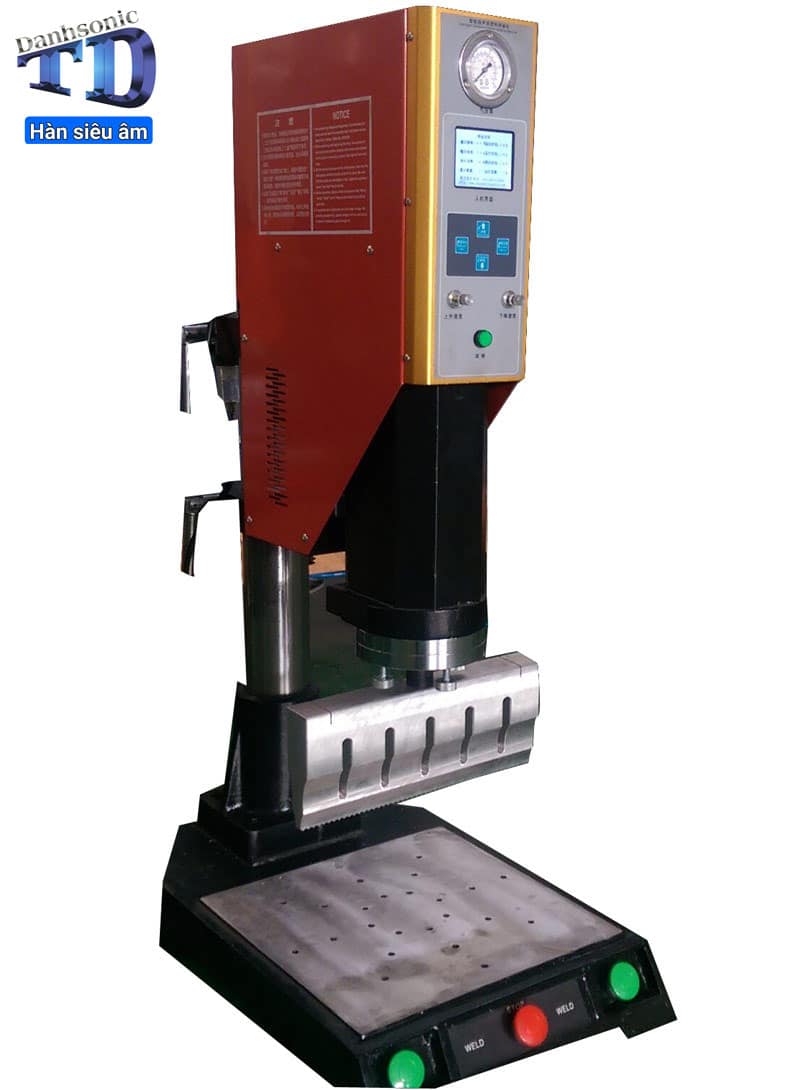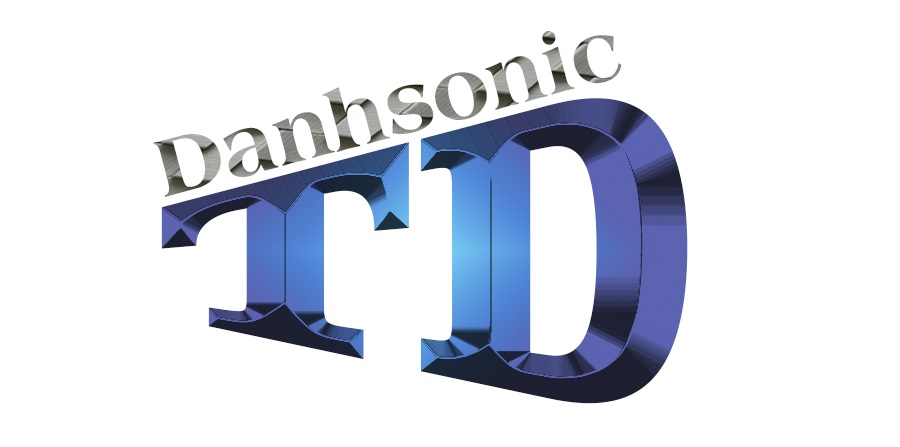Blog
Ultrasonic cutting and slicing – Máy cắt siêu âm
Cutting effort – Speed – Cutting bias – Cutting length – Pre-cut
A high cutting rate requires an increase in cutting power and an anti-stick effect on the products. This is achieved by using ultrasonically activated tuning forks.
- Ultrasound = waves with frequencies between 16 kHz and several hundred MHz, for cutting between 20 and 35 kHz.
- For cutting application = use of high power ultrasound – in the order of one to two kW (modifying the propagation medium).
- The use of ultrasound in cutting has the dual purpose of increasing the cutting power of the tuning fork and generating an anti-sticking effect on the products.
Principle of operation
Ultrasonic cutting assembly consisting of an ultrasonic generator, a transmitter (or converter), possibly a booster, a blade (or sonotrode in general.) The ultrasonic assembly can generate large displacements at the end of the blade via an amplification principle.
The ultrasound generator provides the transmitter with a high frequency alternating electrical signal.
The conversion of electrical energy into mechanical energy is ensured by the ultrasound transmitter, via the inverse piezoelectric effect (deformation of a material under the effect of an electrical polarization).

Some design rules
Finite element modeling of all the vibrating elements (modal and harmonic analysis), dimensioning of the vibrating elements, of the nominal power of the generator (4 possibilities), choice of the design of the ceramics (6 models), calculation of the amplification ratio of the blades (a hundred profiles).
Implementation of technical solutions according to the range of amplitude required (displacement at the end of the blade in microns), the instantaneous cutting rate of the machines, the cutting effort required (impacting the effective electrical power consumed by the ultrasound transmitter), the characteristics of the products (including hardness and melting temperature), the quality of cut to be achieved and the conditions of use of the machine (temperature and humidity).
Design of the blades by integrating the possibility of repairing them
Integration of the constraints of alimentarity on the concerned parts (in particular for the blades: aeronautical and medical certified material) and design of the machines; so as to control and minimize the noise potentially generated by the vibrating elements (declination of the rules of acoustic insulation in insulating boxes, no grids, to the ultrasound application).
Manufacturing of the elements, measurements, characterization (including impedance analysis), parameterization, adjustments, no-load tests (including endurance tests to measure the dynamic heating of the vibrating elements, on-board control with a high-frequency multimeter of the stability of the electrical parameters of the emitter, by cooling it under representative conditions), tests with the products, characterization of the level of ultrasonic noise emitted by the machines (certificates)
Ultrasonic control
The ultrasonic generator manages the control of the ultrasonic parameters of the transmitter; in order to deliver an electric signal generating a level of amplitude defined at the end of the blade, independently of the load (product and machine parameters); while vibrating the acoustic chain at the frequency of the vibratory mode required and previously defined during the design of the blade.
A multi-blade management mode is possible, allowing, for example, to dynamically control the vibratory frequency of each blade, the vibratory heating of the blades (potentially generated by friction with the products), and other parameters, via the possible choice of generator design with specific HMI interfaces (Profibus / Profinet).
Points under development: in order to improve the security of operation in complex situations:
- The addition of a detection function for the presence of the transmitter ceramics, independent of the length of the intermediate cables (compensated voltage drop).
- The integration of a decoupling of the function of maximum consumed RMS power / generator amplitude set point; in order to control, via the ultrasound generator, the consumed power, independently of the amplitude level.
- The addition of a dynamic monitoring of the heating temperature of the IGBT (insulated gate bipolar transistor) of the generator; in order to ensure that its operating curve is not exceeded.
- The improvement of the control of the contacts between the vibrating parts, via the restriction of the machining tolerances.
Presentation of 2 ultrasonic systems
A) So-called “classical” vibration systems
A single ultrasonic emitter is, in most cases, positioned in the direction of the cutting axis (according to the previous representation)
ADVANTAGES :
- -> Maximization of the cutting power
- -> The ultrasonic technology allows the combination of the double effect of cutting and anti-sticking
B) The Vibracut ® assembly
The emitters are positioned in a direction perpendicular to the cutting axis:
ADVANTAGES :
- -> Maximization of the anti-sticking power (very powerful system), the cutting effect being ensured by mechanical movements
- – More latitude in terms of blade dimensions and cutting process (e.g. horizontal cut)
- -> Reduction of the price of the blades
- -> Large cutting length up to one meter
Mastery of :
- the design of the blades
- operation of the upstream acoustic chain (generator, transmitter,…)
- control of the ultrasonic parameters
R&D work such as :
- the development of customized vibration solutions
- increasing the reliability of the ultrasonic chain
HAVE IN PARTICULAR FOR GOAL :
- the reduction of cutting losses to combine high speed, cutting accuracy, reduction of cutting effort, bias-free and repeatable cutting.
CÔNG TY TNHH SẢN XUẤT THƯƠNG MẠI DỊCH VỤ THIẾT BỊ ĐIỆN ULTRASONIC THÀNH DANH
- 280/18D Đường Thạnh Xuân 25, Tổ 29 Kp2, Thạnh Xuân, Quận 12, Thành phố Hồ Chí Minh
- Tel: 0969 718 871
- Email: thanhdanhultrasonic@gmail.com
- Website: https://ultrasonicthanhdanh.com/
Xem thêm sản phẩm


